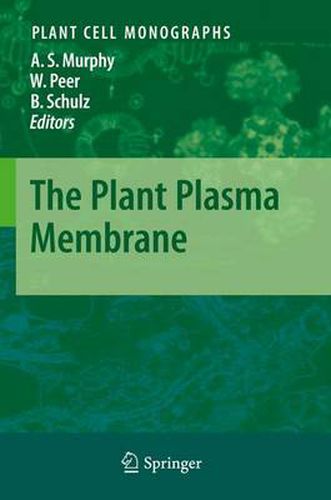Readings Newsletter
Become a Readings Member to make your shopping experience even easier.
Sign in or sign up for free!
You’re not far away from qualifying for FREE standard shipping within Australia
You’ve qualified for FREE standard shipping within Australia
The cart is loading…






This title is printed to order. This book may have been self-published. If so, we cannot guarantee the quality of the content. In the main most books will have gone through the editing process however some may not. We therefore suggest that you be aware of this before ordering this book. If in doubt check either the author or publisher’s details as we are unable to accept any returns unless they are faulty. Please contact us if you have any questions.
In plant cells, the plasma membrane is a highly elaborated structure that functions as the point of exchange with adjoining cells, cell walls and the external environment. Transactions at the plasma membrane include uptake of water and essential mineral nutrients, gas exchange, movement of metabolites, transport and perception of signaling molecules, and initial responses to external biota. Selective transporters control the rates and direction of small molecule movement across the membrane barrier and manipulate the turgor that maintains plant form and drives plant cell expansion.
The plasma membrane provides an environment in which molecular and macromolecular interactions are enhanced by the clustering of proteins in oligimeric complexes for more efficient retention of biosynthetic intermediates, and by the anchoring of protein complexes to promote regulatory interactions. The coupling of signal perception at the membrane surface with intracellular second messengers also involves transduction across the plasma membrane. Finally, the generation and ordering of the external cell walls involves processes mediated at the plant cell surface by the plasma membrane. This volume is divided into three sections. The first section describes the basic mechanisms that regulate all plasma membrane functions. The second describes plasma membrane transport activity. The final section of the book describes signaling interactions at the plasma membrane. These topics are given a unique treatment in this volume, as the discussions are restricted to the plasma membrane itself as much as possible. A more complete knowledge of the plasma membrane’s structure and function is essential to current efforts to increase the sustainability of agricultural production of food, fiber, and fuel crops.
$9.00 standard shipping within Australia
FREE standard shipping within Australia for orders over $100.00
Express & International shipping calculated at checkout
This title is printed to order. This book may have been self-published. If so, we cannot guarantee the quality of the content. In the main most books will have gone through the editing process however some may not. We therefore suggest that you be aware of this before ordering this book. If in doubt check either the author or publisher’s details as we are unable to accept any returns unless they are faulty. Please contact us if you have any questions.
In plant cells, the plasma membrane is a highly elaborated structure that functions as the point of exchange with adjoining cells, cell walls and the external environment. Transactions at the plasma membrane include uptake of water and essential mineral nutrients, gas exchange, movement of metabolites, transport and perception of signaling molecules, and initial responses to external biota. Selective transporters control the rates and direction of small molecule movement across the membrane barrier and manipulate the turgor that maintains plant form and drives plant cell expansion.
The plasma membrane provides an environment in which molecular and macromolecular interactions are enhanced by the clustering of proteins in oligimeric complexes for more efficient retention of biosynthetic intermediates, and by the anchoring of protein complexes to promote regulatory interactions. The coupling of signal perception at the membrane surface with intracellular second messengers also involves transduction across the plasma membrane. Finally, the generation and ordering of the external cell walls involves processes mediated at the plant cell surface by the plasma membrane. This volume is divided into three sections. The first section describes the basic mechanisms that regulate all plasma membrane functions. The second describes plasma membrane transport activity. The final section of the book describes signaling interactions at the plasma membrane. These topics are given a unique treatment in this volume, as the discussions are restricted to the plasma membrane itself as much as possible. A more complete knowledge of the plasma membrane’s structure and function is essential to current efforts to increase the sustainability of agricultural production of food, fiber, and fuel crops.